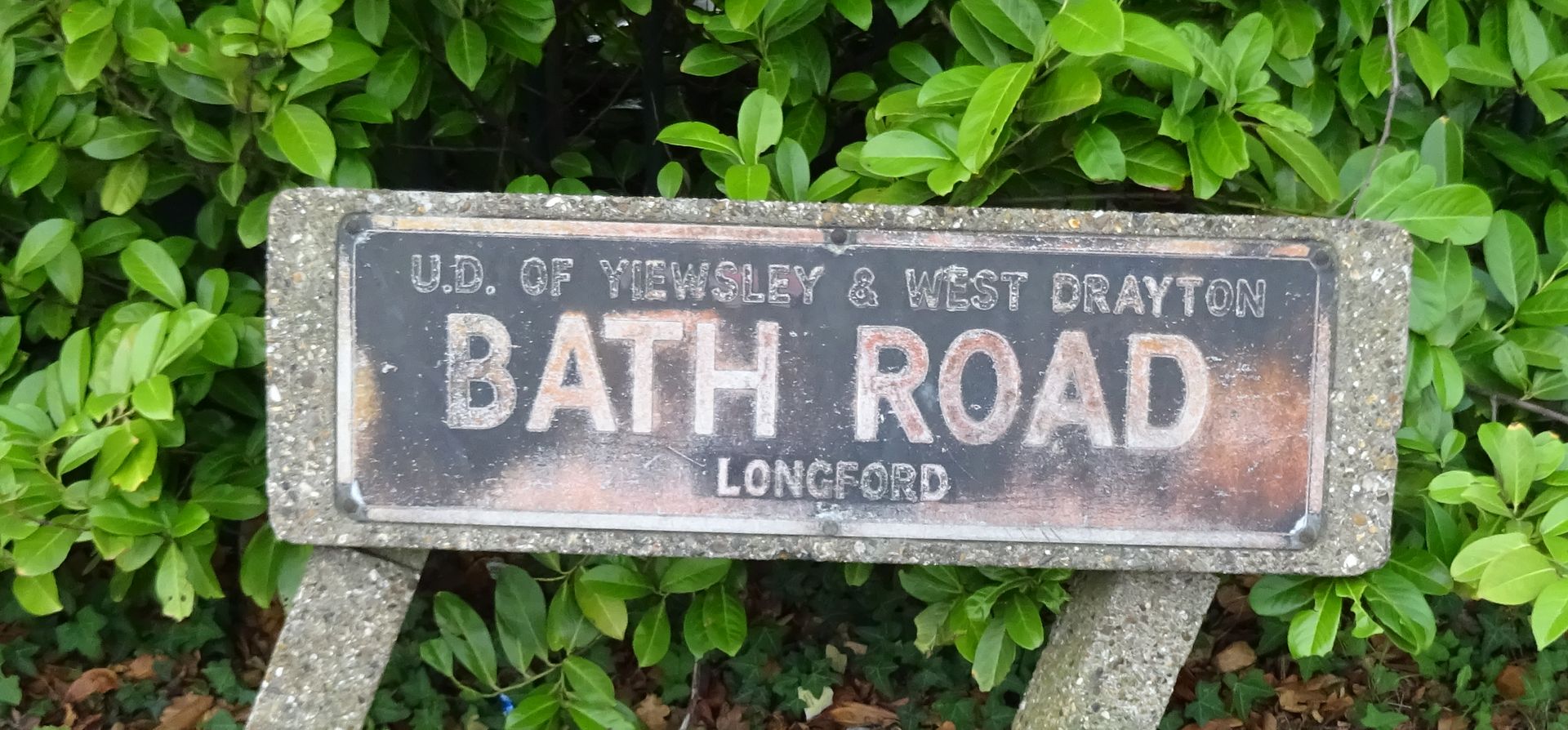Few of us, as we drive along the A4 on the northern edge of Heathrow airport, realise we are travelling on an old coaching route called The Great Bath Road. Nor can we now imagine how it felt for the eighteenth-century travellers in their coaches and carriages, bumping along the hardened earth road, stopping every seven miles to change horses, eat and drink, and enduring that for the three-day journey to Bath. Whilst most people have forgotten the history of the Bath Road there are still reminders of the old days which lie unnoticed against a fence or a wall on the airport side of the road.
The road was a busy coaching route between London and Bath where fashionable gentry would take the medicinal waters. After leaving Hounslow the road crossed part of the isolated Hounslow Heath which brought with it the additional fear of being robbed by highwaymen, but it did not deter passengers from making the journey. The carriages would stop to change horses at the many inns along the route, and passengers would have time to refresh themselves at the Three Magpies at Sipson Green, or the four inns in Longford. For the passengers, the coach journey along the Bath Road, was not a comfortable ride. The packed earth surface was sometimes reinforced with gravel dug from the nearby fields, but this did not prevent it from becoming a constant source of complaint. The vehicle wheels damaged the surface, and dry hot weather baked the mud into deep ruts, which in wet weather would fill with water and produce cloying mud. The solution was to impose a proper maintenance plan on the road. On 1 June 1727 thirty-two trustees met at the George Inn, Colnbrook, for the first meeting of the Colnbrook Turnpike Trust. This trust was formed to maintain the Bath Road, for a length of seven miles, between Cranford Bridge and Maidenhead Bridge. The cost of the road maintenance would come from tolls paid by the highway users. The improved road surface, strengthened by a proper gravel surface and improved drainage, meant the journey-time to Bath could be shortened to less than a day, but there was still room for improvement.
In 1741 the Colnbrook Trust erected mile stones along the seven miles of Bath Road under their administration. The stones were commissioned from Mr Woodruff of Windsor and cost £2 8s each. Although recut in the 1820s the thirteenth, fourteenth, fifteenth and sixteenth miles stones are still in place today. They show the distance between local towns as well as the total distance from Hyde Park Corner.
One of the natural hazards in the summer for the Bath Road travellers was the choking dust created by the wheels of the carriages breaking up the dried mud on the road. In 1827 the Colnbrook Turnpike Trust spent £759 on trying to solve this problem. They had wells dug every two miles, installed pumps and bought new water carts. The pumps were made by Fowler & Co of Lambeth and were about two metres high in order to be tall enough to fill a barrel mounted on a cart. The water carts would then be used to spray water on the road in order to lay the dust. From March to October the road would be watered twice daily in dry weather, except for Sundays. This practice continued into the twentieth century until just before the first World War when the road surface was sprayed with tar. One of these pumps has been preserved, today, at Longford near the 15th milestone.
Today we hardly notice the milestones which still mark the miles from London as they have done for 283 years, but they are still there and still standing smartly to attention to fulfil their purpose. The thirteenth-mile marker is outside the telephone exchange at Harlington Corner and opposite the Best Western Arial hotel and the Airport Bowl. The fourteenth is just past the Three Magpies pub, near Newport Road that leads onto the Northern Perimeter Road West, and opposite the Leonardo Hotel. The fifteen-mile marker is against a car park fence and opposite a petrol filling station and a MacDonalds where the Peggy Bedford pub used to be. This and the sixteenth marker, close to the bridge that carries the Old Bath Road over the M25 near Colnbrook, will be removed if Longford village is demolished to make way for the Third Runway, and another piece of Longford history will disappear.
Read more about the last three hundred years of Longford in:
"Longford: A Village in Limbo" by Wendy Tibbitts
For a “Look Inside” option for this book go to

